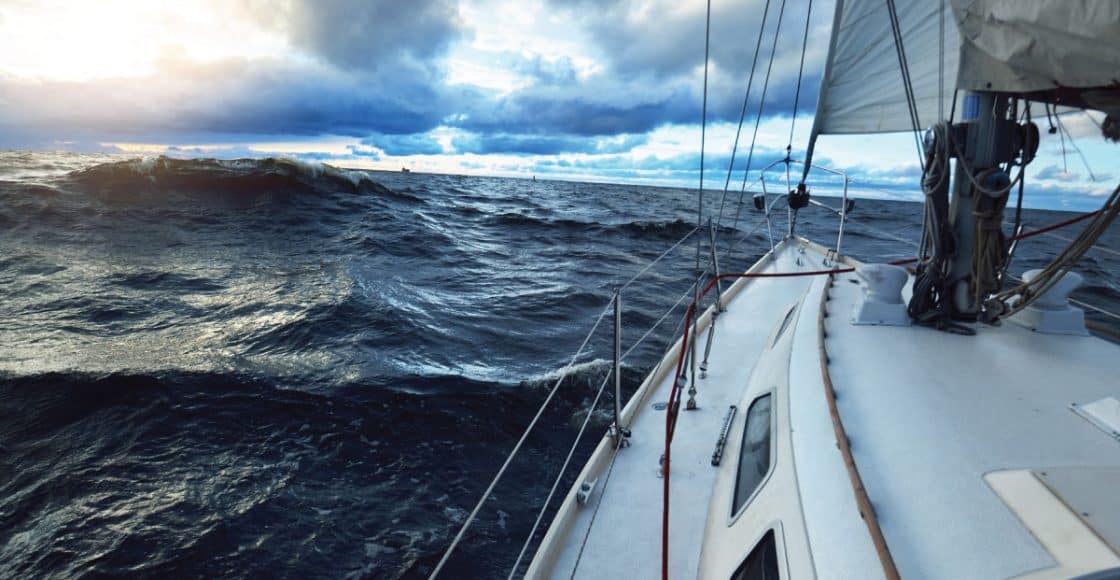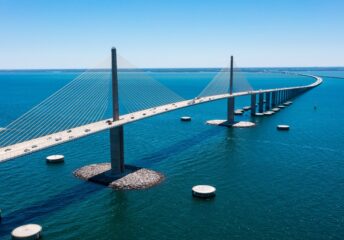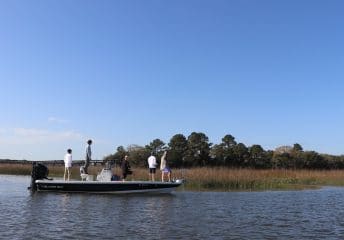3 Boating Tips on Navigating Rough Waters
Last Updated on September 18, 2023 by Boatsetter Team
Chop, currents, tides, and all kinds of other turbulence can turn a fun day on the boat into a nightmare that you, your crew, and your passengers want to forget. Boaters are obsessed with weather forecasts with good reason: Weather conditions and events tell you if you should get on a boat at all.
Then again, sometimes, you can’t avoid rough water. You may be on an itinerary that requires you to cruise through a certain channel or inlet, where heavy boat traffic or big tidal swings make the water rough almost all day, every day.
These cases are different, you’ll have time to prepare for the rough waters that lie ahead and read our three tips that experienced boaters have for navigating rough waters:
- Boating tip #1: Take it slow
- Boating tip #2: Tack into the waves
- Boating tip #3: Know when to change course
Rent, Charter, Share— Only at Boatsetter
Boating tip #1: Take it slow
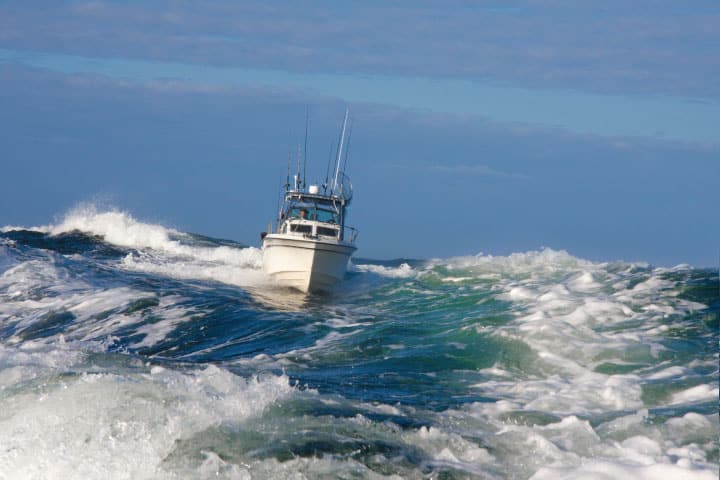
The number-one rough water boating tip is: Slow down! Before you do anything else, pull back on the throttles. High speed can be an obstacle you don’t want to add to this situation. Keep in mind low speed can also be problematic; just slow down to a speed that is manageable.
Slowing down gives you time to think and react to whatever it is the water is doing. You also need time to determine the best way to handle the conditions. The goal in big waves is to ascend and descend with them. Stay on top of them instead of trying to run the boat through them, and make sure you’re not stuffing the bow into oncoming waves.
If your boat has trim tabs, now is a good time to use them. Keep the boat trimmed with the bow high enough that it doesn’t plow under the oncoming waves.
READ MORE: What Information Should Be Included on a Float Plan?
Boating tip #2: Tack into the waves
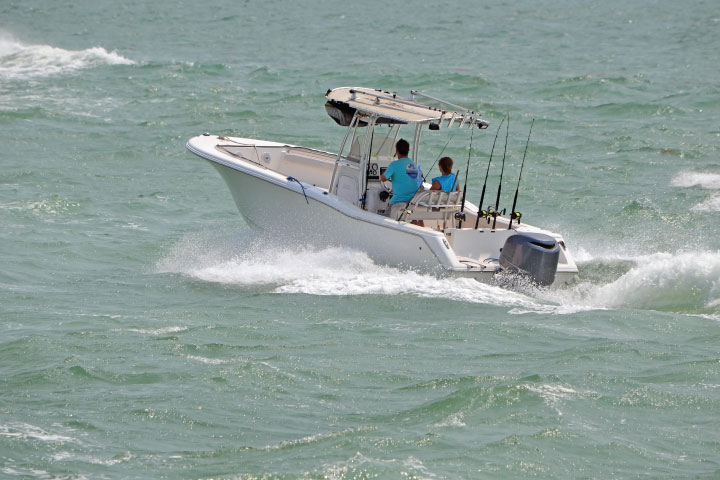
Sailors have an advantage over powerboats in rough water because they know how to tack.
Tacking is a maneuver that looks like a boat zigzagging instead of going straight from Point A to Point B.
A sailboat headed for shore might tack to catch more wind in its sails; by heading east, then west, then east again, it might actually make faster progress than heading on a straight north or south course.
This same principle can apply if you’re on a powerboat if you encounter rough water. If storms descend and you have big seas building between the boat and the marina, then tacking might actually be a faster and safer way to head for shore compared to a direct course.
Use tacking maneuvers to keep the quartering waves off the powerboat’s bow or stern, and you are likely to have a more comfortable experience.
Boating tip #3: Know when to change course
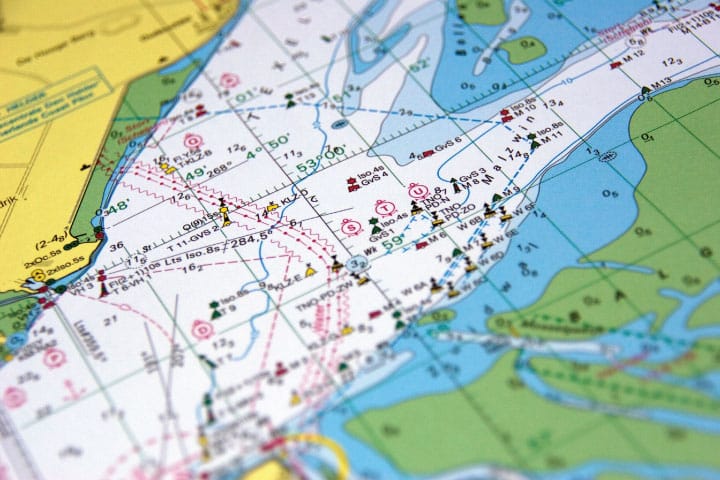
There’s always the option to alter your course. Yes, it might cost you some time. Yes, you might use more fuel than you expected. But at the end of the day, it’s easier to go around some weather and rough water than it is to go straight through it.
The trick when it comes to diverting from Plan A is having written out a Plan B and a Plan C before you even leave the dock. In rough waters, it takes a lot less time and brainpower to alter course if you already have the options laid out in front of you.
Compare your Plan B and Plan C options to what you see on the radar and any weather forecasting software or services you use. If there’s a way to go around the problem, then go around it, even if it gets you back to the dock later than you’d like.
Learn more about boating safety & education with us
- Channel Markers & Navigation Aids: 3 Types of Buoys
- Life Jacket Types: Choosing a U.S. Coast Guard-Approved PFD
- Avoiding Seasickness: 8 Tips for a Smooth Ride
About us
Boatsetter is a unique boat-sharing platform that gives everyone— whether you own a boat or you’re just renting — the chance to experience life on the water. You can list a boat, book a boat, or make money as a captain.
List your boat & start earning an avg. of $20K yearly with Boatsetter

Kim Kavin has been on boats in more than 50 countries and islands, including in the Caribbean, Mediterranean, South Pacific, Indian Ocean and Southeast Asia. She grew up learning to steer a ski boat and Hobie Holder at her grandfather’s lake house in New Jersey, and went on to spend time aboard everything from America’s Cup racing sailboats to submarines.
Kim is a PADI-certified scuba diver and animal lover who always enjoys a good, long look around a coral reef. Her award-winning writing and editing regularly appears in national marine magazines and on leading websites. In her early years, she was a Dow Jones editing intern and a graduate of the University of Missouri-Columbia School of Journalism. When she’s not writing, Kim can usually be found hiking northwest New Jersey’s beautiful park trails with her adopted shelter mutt, Ginger.
